[Bethany Jurewicz, Business and Event Manager, Wisconsin Academy of Sciences, Arts and Letters]
Good evening and welcome. I’m Bethany Jurewicz, the Event Manager at the Wisconsin Academy of Sciences, Arts and Letters.
I’m so excited to be here with our members and friends in Sheboygan, and so glad Shiela is here with us tonight for our academy talk, Understanding the Art of Vision.
As Bert mentioned in her introduction, the Wisconsin Academy promotes the understanding of science, and appreciation for visual and literal – literary arts in Wisconsin.
The work that we do and the events that we host, like the one you’re attending tonight, are all designed to bring people together at the intersection of the sciences, arts and letters, to inspire discovery, illuminate creative work, and foster civil dialogue on important issues. But we can’t do this work alone. Thanks to those who made this evening possible, our Wisconsin Academy members and donors, who support our work, our host, the Mead Public Library, Academy board member Roberta Fillicke-Peninski, Wisconsin Public Television, and a very special thank you to our partner, the Mead Public Library Foundation.
Tonight’s talk is just one in a series of ongoing talks with the Mead Public Library Foundation. We appreciate their commitment to the library and the community by helping to make this evening and others like it possible.
Tonight, I’m happy to present Shiela Reaves, a professor in the Department of Life Sciences Communication, and an affiliate faculty member of American Indian Studies at the University of Wisconsin-Madison.
Reaves specializes in Visual Communication and is interested in how neuroscience supports interdisciplinary theories of visual imagery used in science communication, and technology studies. Currently, Reaves is exploring how the visual brain is attracted to science media messages.
For Life Science Communications, she teaches classes in photography and visual visual analysis for the life sciences, as well as science and storytelling. Reaves is also a member of two steering committees that represent vision science. The University of Wisconsin-Madison’s McPherson Eye Research Institute, and the UW Center for Visual Cultures.
She was also elected to the steering committee for the Holtz Center for Science and Technology Studies in spring 2015. She serves on the editorial boards of Visual Communication Quarterly and the Journal of Mass Media Ethics.
Please help me welcome our speaker, Shiela Reaves.
(applause)
[Shiela Reaves, Professor, Life Sciences Communication, University of Wisconsin-Madison]
Good evening, it’s so nice to be here in Sheboygan. You have a beautiful downtown, you have a beautiful Kohler art museum, and I’m embarrassed to say this is the first time I’ve realized what a great community you have. So, I hope in return I can offer you something about how to appreciate what’s all in our heads, okay, the visual brain.
You’ve been seeing this slide for a while now. What I wanna tell you is that I started off at the University of Wisconsin in journalism school, and then through a series of events was lucky enough to parachute into the College of Agricultural and Life Sciences and Life Science Communication, and what I realized early on was yes, visual communication and photojournalism is natural to me, but I was now teaching science students, and what they really responded to was neuroscience, and so, this is out of a course that I’ve really been teaching for the last 16, 17 years, it’s kind of embarrassing to realize that, but its been – it has been a wonderful adventure.
Before I start, I’d just like to know, in the audience how many of you are artists, or artistically inclined in thinking, so you’re gonna know a lot of this. Okay, it’s gonna come to you, you’ve been using it and I’ll explain how good you are with our visual brain, and hopefully give permission for the others who wanted to raise their hand but wasn’t quite sure if they should.
I think that we can use, especially in our digital culture in terms of our screen life, we are connected, we can find information quickly, but I think in many ways, always being here with our screen is in many ways not using the rich richness of the visual brain, and so that’s what I wanna do today, is to have you be able to sit in a park or sit by a window and realize how powerful images are and they’re all around you, we just have to open your eyes. So, we’ll talk about that. And I’m very serious about these ordinary everyday miracles; life is a visual feast, and I wanna talk about those – those first two seconds of this visual feast. What catches our attention, because in photojournalism, I had to ask that all the time.
And the McPherson Eye Research Institute where I talk to vision scientists all the time, we do have our – our – our current art gallery, and you’re welcome to – to come up if you can find us, but you can go on our website, but they’re talking about the intersection of science and art, so it’s a really intellectually rich feast that I have with E.R.I.
Okay, so in many ways, how many of you, I’m just curious, how many of you kinda get a mental fatigue, is it just me, am I the only one that can’t multitask very well? Can I have a show of hands of those that just kinda get fatigued by all the screenwork and things?
(audience raising hands)
They’re fascinating; again, we’re connected, but I like this notion of using our visual brains to feel more mentally alert on – on that and I love the New Yorker cover that, you know, here they are in paradise and they’re checking their email or something, okay?
Another thing too is that you have control over curiosity, and I don’t hear that as much. Scientists will define curiosity as motivation to attend, and it doesn’t matter which word you use; it’s this notion that if we ask the question, if it is important to us to see more, and I’ll show you different things that your brain is already good at seeing. I believe that when you label these things, you see more and you see deeper, and I think that that’s a visual pleasure that we can deny ourselves on that.
Another thing is that with brain plasticity, as we age, and we’re talking into our seventies, which scientists have already confirmed that, that there are new neurons being built in our – in our memory, in many ways our memory, and making connections visually is actually a good way to work the brain. So, let’s – lets look and see how we can do that.
Unplugging occasionally, and I have to say occasionally to my students who are millennials, ’cause they’re like: Unplug? – you know they would never do that. But ways to do that is walking in nature and gardens, and I know you know this being in Sheboygan and being in a beautiful area. It’s the people watching. It’s noticing patterns and color and light. It’s daydreaming. This down time is something that the brain is used to doing, not multitasking all the time, and I think that – we have nature walking as being a way to increase creative problem solving. Im just – a show of hands, how many of you if you’re trying to work on a problem, walking helps you?
(audience raising hands)
Okay, we live in a time of great science, where people are – are realizing that, and they can prove it with – with good social science, and that’s important to know. But I think what I’d like to do is practice this visual curiosity, because you’re working your brain, you’re not wasting time, you are working your brain, and I think relaxing too.
This comes in many ways from my 10 years, over 10 years in photojournalism. I was among the women who entered into photojournalism to prove that women could, yes, take sports and – and spot news, and yes, we could do it. And I was constantly asking, and we’re talking about in the 1970s, I was constantly asking: What makes a good picture? And in the 1970s people said: “Well, you just know it when you see it.” And that never was a good enough answer for me. I think Chuck Scott of the Chicago Tribune, I was talking to him once, and I said: “What makes a good picture?” And he gave me a great answer: “It’s action and emotion.” And for a photojournalist, that really made sense, that was a good answer for me, but it still doesn’t go down to the elemental units of what makes a good picture. And that’s why with neuro-aesthetics, I know ask what attracts the visual brain.
Neuroscience and vision science knows an awful lot, and again, we’re gonna be staying within those first two seconds, actually really first second.
I first wanna just do some very quick anatomy, because I once had a graduate student who was so confused, and he’s like: “Well where do you do your thinking?” And so, I just wanted
(laughter)
in the 1990s, President George Bush called the 1990s the era of – of the brain. And – and it was because we had the functional M.R.I. technology, and the – the visual brain was one of the first parts of the brains that was fairly easy to look at. Because it’s in the back of our head, you can, you know, go put your hand on the back of your head. That’s your visual cortex. That’s where dreaming happens. I mean it goes both ways, in terms of anything visual is happening. And it was pretty much spread, I mean concentrated in the back of our brain, but then spread out.
This is the visual system; the visual brain is a metaphor. I mean psychologists would be saying: Shiela, it’s a visual system, it’s connected throughout the brain, but we’re not gonna worry about that, okay, we’re just gonna think about this early level processing, that’s before we start thinking.
But let’s look where we start thinking, that’s in our frontal lobe, okay. That’s where the thinking is, our prefrontal lobe. That’s where you walk up to a group of people and you can instantly know if they’re friendly or not, that’s the kind of: Am I safe? The brain is first asking that, and so you’re thinking about that. But just remember always if you just wanna get out of your brain of thinking, if you have a worry loop, and you just wanna get out of the worry loop, start looking around, start thinking like an artist, just get out of your head. And again, I’ve been giving this talk for several years now, and I think that it is one way that we can enjoy life without always having to be thinking about it.
What we’re gonna be looking at is that first pre-conscious, the WHERE Pathway and its – it is all about locating things in our room. If you have ever been to a new building, you can kinda get a sense where you’re kinda looking differently, it’s like: Where am I? what’s going on here? That is that dorsal stream, the WHERE Pathway that is acting very quickly in terms of locating what’s going on, so it’s all about location.
We’re talking a glance; you know that when, you know, Look both ways before you cross the road, that’s a very quick looking, and yet, we can spy the car, we can, it’s pre-verbal, it is keeping us safe, and then we go on our merry way, so that’s our first. But all again before language, a glance is faster than verbal processing.
The second one in the – in the – the, starts off in the back of our brain, is then the second, is the WHAT Pathway. And we’re talking about recognizing. We’re talking about not just looking at color but naming it and being able to be more attentive to color. But color has actually been used in the WHERE Pathway, it’s just that it doesn’t care about the hue. It is black and white, it’s – its the lightness and darkness of color that’s happening in that.
We’re talking about 300 milliseconds, that’s about a third of a second, where you’re recognizing people or things or where you’re at. And then attentive gazing, we have decided with – with less than a second that we like something or not, that’s like 600 milliseconds, about two-thirds. And I wanna ask you a question, if you’ve ever been in a museum or art gallery, how many of you have every felt guilty that you’ve just kinda sailed by a whole bunch of art because you know you don’t wanna be there? Have you had that?
(laughter)
Is that – are we shaking our heads? People are laughing, okay. You don’t have to worry, because in two-thirds of a second you know if you like it or not, okay? So we can let go of that guilt just a bit. The point being is that our brain, before thinking, before verbal analysis, is doing a whole lot of work, keeping us safe, getting an idea of do we like something, and recognizing small amounts of a visual scene. And that’s what I think is fascinating, and that as a photo – former photojournalist, that’s what I’m really interested in.
Do you like this photo? Okay! You do like the photo, good. You get a sense that – that mom is pushing the baby. You get a sense of the direction, right? I didn’t have to tell you that, correct? I mean are we, okay, you get an idea of direction.
That’s an example of -of understanding the visual brain and so, I just wanna make sure that we have that. These four areas are processing centers that are privileged in the visual brain: Lines and forms; when we talk about lines, we talk about edges, okay? Contrast and color; I’ve told you it’s not just color, it’s lightness and darkness of color. Movement and direction; and then depth cues, which is – is pretty cultural. But computational scientists have known about this, these you can think about as attention engines.
They are again – so – it’s so important for the visual brain that when you use this or when you just look for this, you are exercising something that your biology has given you. You can do this. If you have a neurotypical brain, you’re good at all four of these areas, and this has a lot of – of – of impact for visual communication.
This was from 20 thousand years ago and Picasso was – Time reported Picasso as allegedly saying, when he says the first cave art, he looked at them and he said: “We’ve learned nothing.” Okay.
(laughter)
I love that. But look at this, Weve – I’ve just introduced to you these four sections and many of you in the audience know about these four processing – there’s over 30, 35 processing centers in the visual brain, but these are the ones that are privileged. And you can see the lines, see the horses and you know the direction that they’re going. Do you see the heavier lines in the faces? I mean these are people from 20 thousand, you know, B.C., it’s just absolutely amazing to me. The direction – depth cues. Depth has always been hard for artists, or maybe they didn’t care, they, you know, they wanted the rhino in there, but they – they just kinda knew if it was at the bottom, it was not as close as the horses. And how many of you are looking at this orange paint up in the upper right-hand corner, whether you like it or not, you go there. I – I’ve been seeing this slide for many years now. I’m always annoyed that I’m going to the color up in the up, ’cause there’s nothing there that I can see on – on that. I’m not part of that culture, but it is hard to ignore color because we’re so good at processing it.
So, let’s look a little bit at what I’ve gleaned. In 2012 I – I did a version of this talk for the Watrous Gallery and I wanted to give you an overview of what do we know exactly about the visual brain, at least from my perspective in – in reading as much as I can, talking to people. The first thing is that we had the two silos, no communication between the science and the humanities and that has pretty much been wearing and tearing down over these decades and I think that in the visual brain definitely does that. But here are some things I’d just like to share with you because I find them especially precious in terms of information in supporting the creative, artistic brain.
The first thing is that we might share the same biology of our brain, but it is shaped by your autobiography and your culture and color and depth are very culturally shaped. But also, by motivation and curiosity. If you want to see more, you will see more but you really have to want to. And that, again goes, I – I love movies and fine cinema but it can make you kind of lazy ’cause you just see all the beauty from someone else’s point of view and the director’s and that kind of thing but we can see similar things and appreciate them from our ordinary life and that’s important to know. Curiosity, that motivation to attend.
“A glance is faster than verbal processing.” Colin Ware is a computer science textbook author and – and I love that phrase because it hit me that so much of visual processing is before – before our thinking brain. It’s before judgment, and that’s something to realize that when you are poking around and looking at things you really are getting out of your thinking brain and I think that that’s a rich way to live. I think that people who are artists really can live at a more – at a – at a deeper level. But all of us in the room, I can’t draw stick figures, you know, I’m not artistic in that regard, but I can open my eyes and I can see and I can appreciate the beauty from architects and art museums and – and sitting by my windows.
Two seconds is a long time in visual thinking. Again, we’ve got Colin Ware. Again, he’s trying to train computer science students. And so, think about it, don’t take my word for it. Just next time you’re looking at something, count a thousand one, a thousand two. Your eyes are kind of bored within those two seconds. You might be flitting around to something else. It’s that we see, we grasp very early and we move on. Our – our eyes are moving a lot, even though we might not think like they’re moving but they are.
And we don’t see with our eyes, we see with our brains and this is especially true of depth and color. And so, with your curiosity, you can expand your visuality and you can do it the way you want to and that’s what I love about these first two seconds of the visual brain. And again, we see with our – our brains.
Let’s look at this. This is – how many of you are being annoyed by this? There’s kind of – it’s moving. I can get a headache. I hate this slide. But it has created in many ways a whole genre in art history starting around the 60s or 70s. They called it kinetic art. And if you see this movement, this is being created by our brains. Okay? It’s not moving, we know that, this is not a video. But you have to think about it. When our brain was actually evolving on the Savannah in the Great Plains, it did not have to look at small little repeated patterns that have a lot of contrast. And so, if you like optical illusions and they don’t annoy you the way they annoy me, start to look, don’t take my word for it, start to look and see the ones that are moving probably have small repeated patterns in contrasting colors because that’s what tires our neurons. Okay? That’s what gives us this fatigue. Okay, enough of that.
Okay, so why are we so visual? Why is 70% of our brain’s sensory cells devoted, at least 70, can be as high as 80, depending on what vision scientist you’re talking to, but why are they used for visual perception?
Think about that, 30%. Think about how important taste is and it has to fight with auditory processing and touch for those 30% of our sensory cells. That’s how visual we are, which is why when we know something is a fake or a phony picture, there’s a part of us that still kind of believes it. We still kind of tend to believe what we see. Well, there’s so much fire power of our brain going to visual processing.
And here’s another thing that I love that is very important, at least to me. Hubel and Wiesel, they won the 1981 Nobel Prize, they basically, in, kind of, a way, sort of, invented vision science or at least put it in front of science, great prize. And they said our brain cells are difference detectors and I think that should become a clich for anyone interested in visuality or art or the brain because we can do this verbally. We’ve trained from kindergarten on, what’s different, compare and contrast. Our brains, we do it, we’re good at doing that, seeing what’s similar and then what pops out.
So, who cares?
Who cares?
See the owl, isn’t that a great owl? My – a lot of my students will find these great pictures and so Ill – I – I take them. But visuality keeps us safe. It alerts us to dinner if we’re hunting or making sure we don’t become dinter – dinner for someone else. It is something that is again, evolutionary and powerful and – and again pre-thinking, which means you can know the trick, and the optical illusion still works. Why? ‘Cause the visual brain has rules, has cultural rules too, but it has some hard and fast rules. Let’s look at one. How many of you know what I’m talking about? Edward Adelson, vision scientist at M.I.T. and he early on produced this and you see two squares that pretty much look the same, right? They’re the same shade.
Bear with me. You can look this up on – on Google, but yet when it – when you see the full field which for some of you is – is the square number B starting to get a little lighter? Because what the brain is assuming is that it’s in the shade, but it is no longer looking quite the same shade as it was early on. Okay? It just might be a little lighter. Some people can see this more easily. What he was able to show, and here’s again, it starts to then, kind of, look, the brain creates contrast. It craves contrast and it is not concerned with accuracy. It does not care, here I am anthropomorphizing the brain but anyway, it does not care that these shades are actually lighter and darker. Okay? It wants contrast and why? Because it’s contrast that defeats camouflage. Okay? How many of you have a loved one or a friend that served in the military? You might be aware of camouflage and there is a reason. The brain doesn’t like camouflage. You overlook things and you do it at your own peril.
So, what I love about artists, you can Google Liu Bolin if you don’t know – already know him and be charmed by him. He’s a Chinese artist and he is camouflaging himself everywhere we go, he’s camouflaging. So, you might have seen him by his face, I don’t know, it’s up to you. But it’s just a charming way to get an idea of – of challenging our brain and you get – you see what camouflage can do, in this case a very interesting way. If you like this, it might annoy you, but if you like it, I just want to offer to you Frederick Turner’s phrase neuro-charm and he makes a case that it’s not just pictures that can charm our brain, a neuro-charm. It’s dance. it’s music. It’s so much of the arts that are, I would say, reflecting a lot of our visual brain. But he calls them neuro-charms and so I love it when my students start talking in terms of that’s a neuro-charm and that kind of thing, I like that. It’s good to know what you like. It’s good to know what you don’t like. It’s just good to know you’re seeing.
Okay?
I want to credit the – my colleagues at the Eye Research Institute, because they basically told me how important it was that we had this face-seeking behavior. And for as many of you, you’re kind of going: “Aw.” It’s got the Aw factor, that’s a neuro-charm, that’s what it feels like, okay? And we can’t turn it off, because face-seeking is pre-verbal. Face-seeking is mid-level processing. We are not conscious of it yet.
Think about that.
The brain doesn’t care if a face is real or not. It wants to see a face. If there’s something possibly out there, because a face could hurt us.
And so, we can use this. How many of you look at faces and shapes in the clouds?
There is – I found this out – this is part of mindfulness training where in order to cut down in stress, UW counselors at the School of Medicine and Public Health will train students to just – and – and the one was saying: “I do this for 10 minutes every day.” on that is to just look at clouds, because you’re out of your thinking, you’re out of whatever panic attack you might be trying to tamp down and you’re just being visual and you’re doing something that the brain is good at doing, seeing faces. Okay?
Don’t take that lightly. Again, it’s before we recognize it. We’re seeing that. It is a behavior.
We also notice the emotion. Okay?
(laughter)
That emotion, he’s – hes, kind of, scared.
It adds the emotion, that’s how good we are preverbally at getting something very quickly. Okay?
So, you can enjoy that kind of seeing faces everywhere, woods of grain, tiles, what have you. It’s – I think mindfulness training. Again, you’re not thinking about your to-do list and I think every time you can get away from that to-do list is a good thing. Okay?
How many of you have heard of Bev Doolittle?
Oh, isn’t she wonderful? My students really like her and they love this particular one because it’s “The Forest Has Eyes” and there are about 12 or 15 faces here and I’m not gonna paint – oh, it took me a couple years to find out that the face was in the birch. You know, I’d always liked the birch, but I didn’t quite get it, so I can be fooled a lot and now I look at it I’m like, well, once you see it, it’s hard not to see it. It’s hard to unsee things.
I know people are now talking. They’re talking about – there’s one over there she missed. She missed that one, too.
(laughs)
Once you know, you’re good at this. Okay?
And the face is defeating camouflage, always remember, the brain really does not care if it’s a false face. It’s making sure you don’t miss that real face that could hurt you.
So, let’s backtrack just a little bit. I want to go to lines and Mondrian is – is one of the, kind of, mid-20th century. And it goes back to Janet Norton saying, and she’s a neuroscientist, saying that we don’t see with our eyes, we see with our brains and let’s look at that. Hubel and Wiesel, the ones that earned the Nobel Prize, they really were able to prove that there are significant neurons – this is as close as I’m gonna get to neural science – is the neurons that – that are sensitive to lines of orientation.
So much of art is about lines and whether you like it or not, lines are very powerful as an attention engine. And they – there are neurons that will only see horizontal lines, vertical lines, think trees, horizon – the horizon. And then there were a few that – that are sensitive, not as many, but they’re sensitive to diagonals. And I – the only thing I can think of is like falling trees or people bending over on that. But lines are one of that very first early processing. It’s lines that are making the faces. Okay?
And so when Semir Zeki, who’s a neuroscientist in the United Kingdom, was looking at it and he says: “I can’t cease to be fascinated when I watch a single cell among billions of cells in the cortex, respond with such precision, regularity and predictability to a line of a particular orientation.” We are consistent about the lines that we see. And by the way, as a photographer, those diagonal lines, that has a lot of artistic energy because they’re not as common as the vertical and the horizontal; those diagonal lines, play with those. Anyway, Semir Zeki then made – he coined the term neuro-aesthetics. So, the aesthetics, the study of beauty, now was brain-based and what Zeki thought was like, you know the artists have known about this faster than we have, we’re catching up with the master artists. They have known that because they’re trying to figure out what catches people’s attention. So, there’s that overlap of catching attention.
He wrote Inner Vision, the book Inner Vision, and this took off so much for neuroscience, two years later in Science Magazine, he said: “I was the one that coined neuro-aesthetics.” Okay? And so that is something that says to me a lot about he – he was the right neuroscientist at the right time to put together how it is important that artists have known this before the neuroscientists. And that’s what I love about neuro-aesthetics.
So, let’s look at these – these attention magnets. We have outside edges; we see easily before details. Okay?
Form is a way to defeat camouflage. Think of Liu Bolin earlier.
We close lines without even thinking about them. This is not a triangle. It’s a trick question. These are three separate lines, but yet you see it as a triangle.
Did anyone see – this is representing the pentagon. Anyone see the pentagon inside those? Good for you ’cause I didn’t. It was so annoying, Okay, there it is. For those of you who are like me, there’s the pentagon.
But the point is that we have been closing points and create, you know, with invisible lines for millennia and we have made stories about them and culturally they differ. And that just shows you that stargazing has something to do with lines; lines don’t have to be real. Okay?
So, you can see this ad and you might appreciate the line that isn’t really there. Okay? I think that’s so clever. This is from one of my students. Gestalt – a Gestalt Theory really came about in 1912 from the Bauhaus School before the Nazis chased out the – the artists and architects there. And continuity and alignment is just something that graphic designers will learn. They might not call it this, but they know that we will follow lines even when they’re not real. Okay?
Why?
‘Cause we want to form a shape. So, try not to look at this carpet which is flat. Okay? It’s in Paris and they’re just messing with your mind. Okay?
And that’s what I love, that’s what I love about these optical illusions is that we all recognize this as seeing the same thing. We might be annoyed, but we, you know, you can’t not see the ripple. Okay? And there are a number of other optical illusions that prove that, that we follow lines, against our will we will follow lines to create a form. Artists can use this information. So can photographers.
Here are some chalk artists, and I would encourage if you wanted to look at more chalk artists and what we have here is the beginnings, the outlines, of little soldiers but it’s on a hill. So, this is what the chalk artists are actually working with. They’re – theyre elongating lines. They’re shortening lines. Because of their creativity and their craftsmanship, they can create this for the camera. I just admire them so much. It is amazing. It is wonderful. And they’re using these elemental forms of the visual brain, we want to see faces, we follow lines and we pay attention to color.
We also pay attention, I said earlier, about contrast and many of you may already know this. David Rittenhouse in the 18th century, this is not a photo, it is a drawing, but it proves another brain rule: Turn this muffin tin upside down and what’s gonna happen? They’re gonna reverse. The dents become bumps and the bump becomes a dent.
Why?
Because we have a brain rule and that brain says – well first of all, let’s hear from Margaret Livingstone. If you are someone who really loves this idea of neuro-aesthetics and how vision science can explain it, Margaret Livingstone’s beautiful book, “Vision and Art: The Biology of Seeing.” It’s illustrated. It’s heavily scientific, but she has this beautiful quote of contrast alone is enough to give a vivid sensation of three dimensionality, just by using lightness and darkness. And that said a lot to me as a young photographer, because I was fascinated by light and no one ever really cared. Well, now I know. It’s a very powerful brain rule. And, you know, the brain rule is light falls from above.
What do you think? Sunny day, it falls on the sun. The sun is – is creating that, and shadows happen from below. And so, you have our artist here, David McDonald, who’s annoying us.
(laughter)
Okay?
And you can decide is this a neuro-charm? It’s up to you. You can decide. You’ve already decided. Okay?
But it proves that brain rule and that’s what I love about that intersection of art and science.
Let’s look at Leonardo Da Vinci because it’s really amazing. When I was listening to, you know, to professors in humanities, vision scientists, I started to realize that they talk about the same thing but they use different words. And so, the lightness and darkness of color matters.
How many of you say – I’m just curious – how many of you in the audience really love color and you know you love color? Just a show of hands.
(audience raising hands)
How many of you aren’t sure? Just be brave, raise your hand proudly, okay.
(audience raises hands)
If you – if you would like to be more available to color, you really just have to ask, is it darker or lighter? Because Da Vinci became an acclaimed genius because he knew that mattered.
So here we have lightness and darkness, it creates camouflage or contrast. Okay? These are just little coins, but you can kind of get an idea that they are making up the Mona Lisa, just by the lightness and darkness. It does matter.
Vision science calls it luminance and vision scientists want to actually measure the lightness and darkness of color so that they have something that, you know, they can point to. Artists don’t really care; they just want to know the impact. They call it value. It’s the same thing, it’s lightness and darkness of color. If you are a designer, you may have heard the term shading or brightness. If you use Photoshop, you have brightness. It matters. And what Leonard – Leonardo Da Vinci says is that chiaroscuro is an important – lightness and darkness was so much a part of his genius. And then the dictionary, I love, this is one of the best definitions: “light and shade without regard to color.” Who cares about the hue? Let’s go with the lightness and darkness and I was talking to a, sorry, listening to a psychologist who measures color and is trying to really get some important questions answered. And she would just cue the – the subjects by saying: “Is the color light or dark?” It matters. Okay?
Let’s look at this. Here we have the three dimensionality of Mona Lisa’s eye, but Leonardo was messing with color, he wasn’t bamboozled by the hue, the color of it. He could see through to the lightness and darkness.
So, contrast is important even with color, the lightness and darkness, and you will just jump hurdles ahead of other artists just by appreciating that and it will open up the world of color for you and it will deepen it.
Let’s look at Monet. We remove the color, what – what scientists would call hue and where’d the sun go? Okay?
The reason being is that this blue and this orange is the same shade and so you can see how you remove the color hue and you get camouflage again. It’s there, you just can’t see it very easily.
So, what we know about color, and here’s a beautiful painting but let’s add the color. What it does for us, for our ancestors who hunted, is that it deepens the feeling of space. It is a depth cue, the lightness and darkness, and we see yellow first. In fact, two of our cones are both sensitive to yellow.
So how many of you like yellow?
Your annoyed, like it?
How many of you are annoyed by it?
It’s kind of heh? I love yellow.
But it’s very easy to see, it’s hard to ignore. Think the crime scene tape, yellow school buses. They might not have read any, you know, color theory books but we all know yellow is easy to see. Okay? It shows depth on that.
So, what I love about this Edward Harper is that sense of depth – of depth in that mind is entering space that doesn’t exist. It’s a flat screen and that’s what I love about artists is that I can’t do the stick figures, but they can create empty rooms filled with light that I love on that. And that matters to me, that sense of spaciousness. I think it’s a miracle. I – I really enjoy that. So, if you’re an artist that can actually do that, my hat’s off to you. But look at the lightness and darkness and seeing these different planes within this flat screen. Okay?
This was from an artist, he’s visually impaired and I just want to show just a few depth cues that only needs the eye, only needs one eye, mind entering space. And that is – excuse me. Going back. That – those are the lightness and darkness and the lines coming in that we follow in.
Let me go back to this little group. Okay?
Similarity is – another important thing about visuality – is that we group together things that are similar shape. They might not conceptually belong in the same categories but visually we can see them as belonging and we do that, again, preverbally.
If you’re looking at these hamburgers, you might be thinking: I’m a vegan, but you might be saying: Oh that looks good. But you know what you’re also doing is what?
Comparing the size and it ping-pongs back and forth. Try to look at this image without comparing.
It’s pretty hard because the brain is very good at comparing sizes. So, compare shapes but it’s also comparing what’s bigger and Kosslyn out of Harvard said very much in that large differences are noticed first. So, as an artist, if you want to really get attention, do something really big next to something really small, because that’s an attention getter. Our brain can’t help ourselves; we compare.
The bigger objects might get the most attention but they’re getting attention. Greater differences, greater attention. This is very important if you’re trying to be a science communicator and get someone’s attention, to know this rule of how the visual brain is working, so that you work with the brain. Okay? Our brain cells are difference detectors and size differences are important. So, try not to compare, just try. Okay, if you are, you’re just memorizing it. Okay?
They’re charming. These are neuro-charms, but they’re working on the same principle.
Let’s look at more similarity and these are just artistic things that people create.
Advertisements can use this. Okay, they got Audrey Hepburn, but they’re trying to compare, that similarity. And then I – what I want to do is to talk to you a little bit about the genius of Salvador Dali in that he is doing a snapshot of what you’ve been doing preverbally is like try to find the face, right? Your trying – look at this, you’re trying to find a face, face isn’t there yet. But what are we using? We’re using the lines that I talked about, the size changes and the color contrast to create that. And you have been using that because you’ve been looking at some of these principles. Okay?
So, I think that Semir Zeki, the neuroscientist who – who – who coined neuro-aesthetics, was exactly right, the artists have always been way ahead of us and I think “Galatea of the Spheres” was in I don’t know what age, but it was – it was before the Internet. My apologies for not knowing what age. Okay?
And again, you only need one eye for these – some of these depth cues and that’s what I also like is that – is that an artist came up afterwards to one of these talks and she said: “I’m so relieved to hear, I am going to be losing vision in my one eye, but I now know I can still handle depth so it won’t become a flat world for me.” And I think that’s wonderful to know that we – the brain counts that as being very important.
Similarity and alignment and closing gaps and face seeking, we can’t turn it off. These are Gestalt terms for most – for the most part, early 20th century. And you can see again, we have already talked about these principles. And so, it’s a consistent sort of thing differing by the variety, the great variety of actual images that you like. But you’re still using these brain rules for lack of a better term.
So, what I’d like to do in summary is to give you some – some takeaway messages, because I’ve been throwing a lot at you.
I think the notion of our brain cells are difference detectors is very important. Okay?
Mandrian did very vivid color in his squares and we’re trying to defeat camouflage.
Contrast alone, lights and darks, can give us a sense of volume within – of objects, curls and – and fullness in a vase or whatever you’re looking at. Contrast is so important. Don’t be bamboozled just by the color.
But color does help us in depth.
We – it helps us to perceive three dimensions and in hunting. Warm colors like yellow being seen first, blue colors tend to soothe and they tend to recede into the background.
Seeing outside edges is what’s important and we’ll follow these perceived lines, whether they’re real or not to a kind of conclusion. And if we’re interested, we’ll then study the details. And that’s the important thing of attentive viewing is if you’re curious, then you can really visually enjoy your ordinary world because you’re already doing this, so you can see more.
And that’s again what I like about the kind of democratic nature of our early processing visual brain.
Seeing patterns of out chaos, we’ll see that overall pattern first and then if we’re interested and only if, you’re the boss, then you can see the details of what caught your attention. Again, the brain doesn’t care if it’s a real face or not, it’s looking for faces.
And going back again to these, like, attention engines, these four areas that again shows up in computational neuroscience. They can prove that. That it’s the form out of – out of edges, out of detecting lines and so the – the more contrast, the black and white, the silhouettes that you might like to take as a photographer, very easy on the brain, very easy.
Color and depth and movement, again, we can’t, we’re always gonna know the motion. We’re always gonna have that. That is an attention engine because it’s a survival tool. What’s moving? What was that? It might be a fly, but you’re still gonna notice it. Okay?
And the more you know, the more you see.
So, thank you.
(applause)
Search University Place Episodes
Related Stories from PBS Wisconsin's Blog

Donate to sign up. Activate and sign in to Passport. It's that easy to help PBS Wisconsin serve your community through media that educates, inspires, and entertains.
Make your membership gift today
Only for new users: Activate Passport using your code or email address
Already a member?
Look up my account
Need some help? Go to FAQ or visit PBS Passport Help
Need help accessing PBS Wisconsin anywhere?
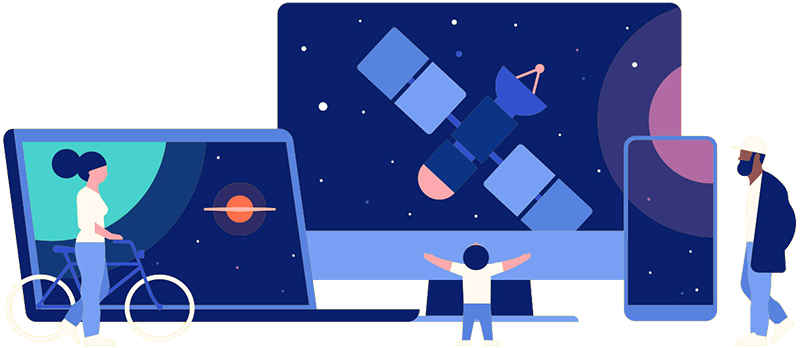
Online Access | Platform & Device Access | Cable or Satellite Access | Over-The-Air Access
Visit Access Guide
Need help accessing PBS Wisconsin anywhere?

Visit Our
Live TV Access Guide
Online AccessPlatform & Device Access
Cable or Satellite Access
Over-The-Air Access
Visit Access Guide
 Passport
Passport

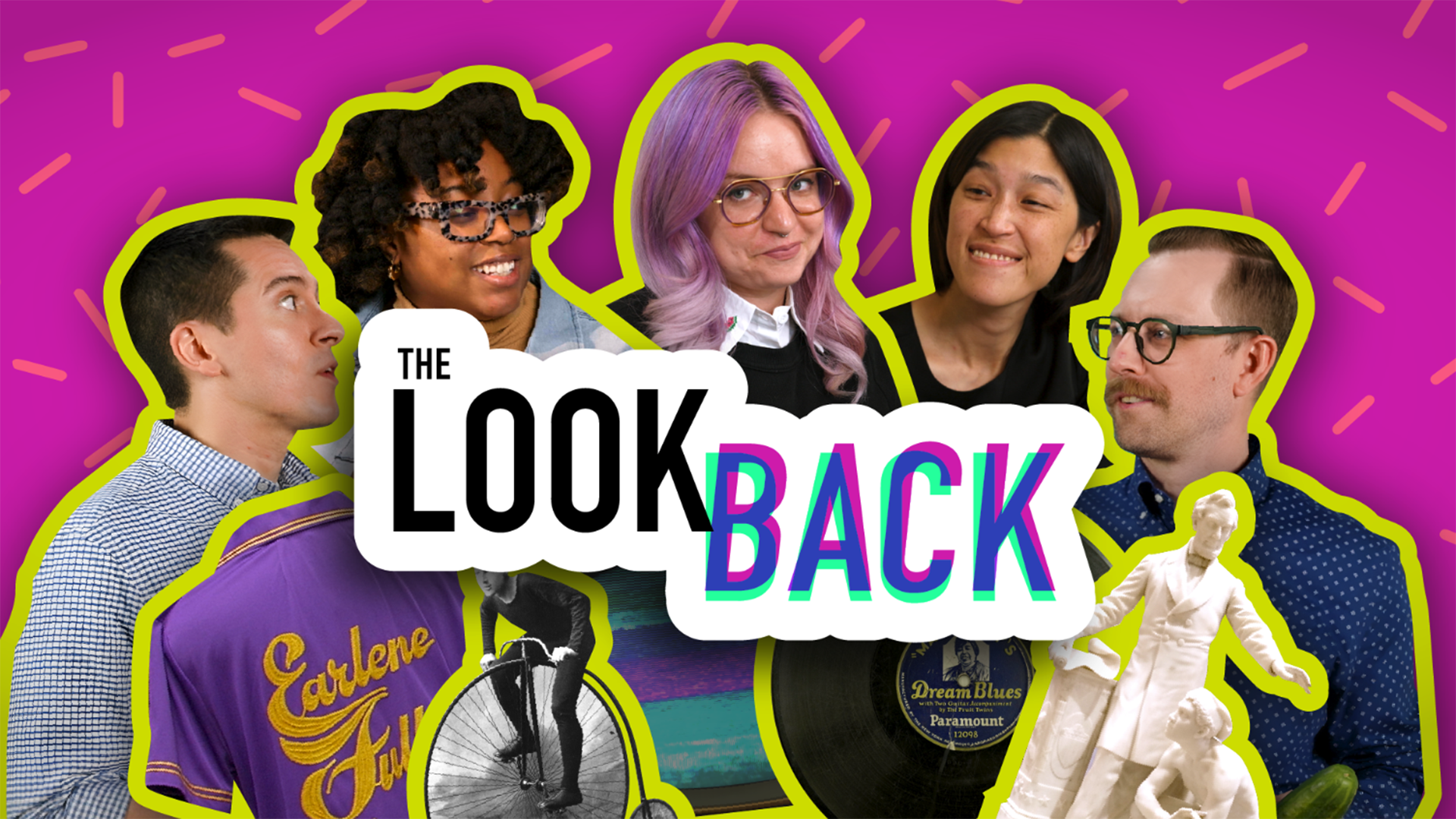
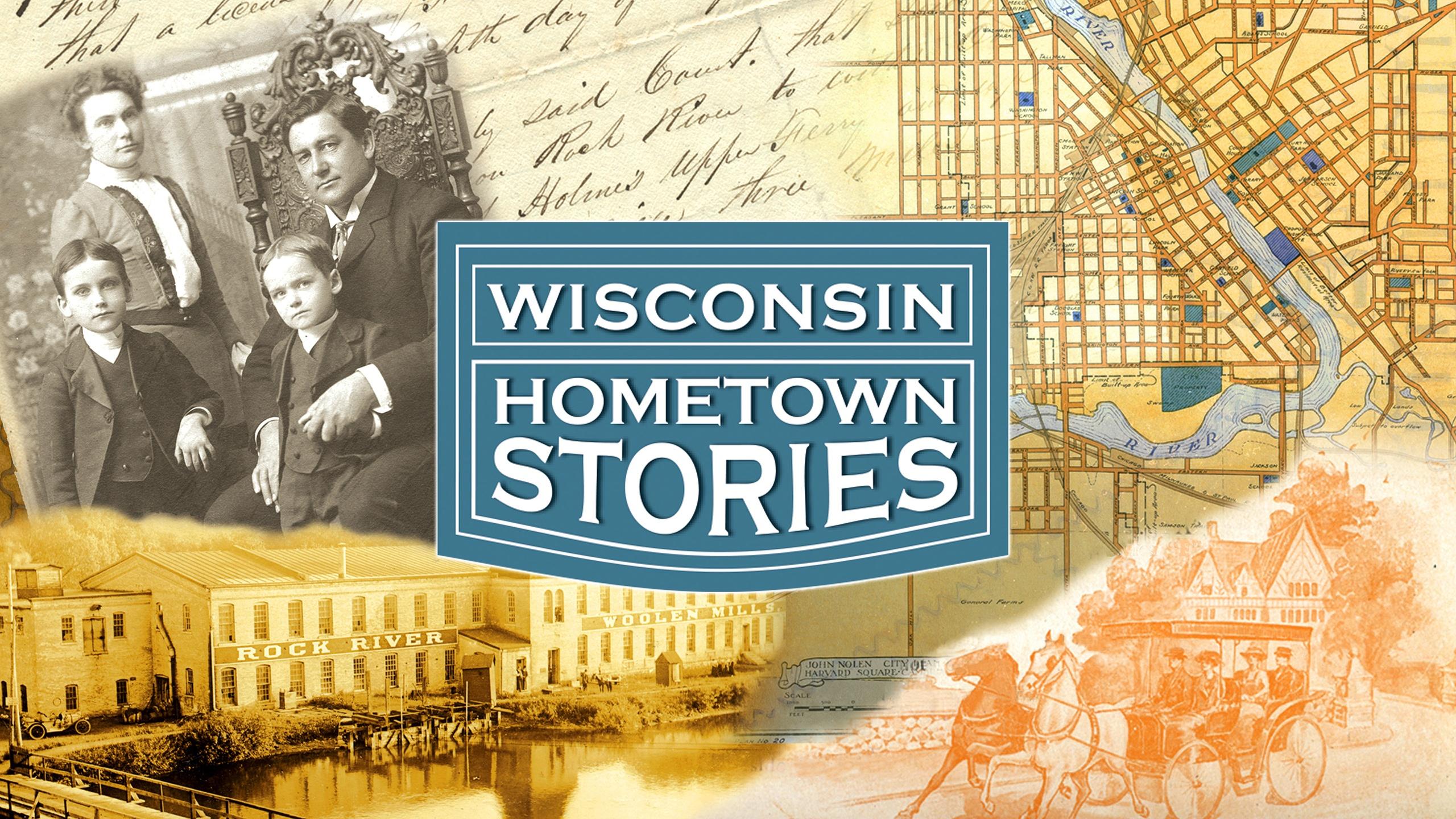
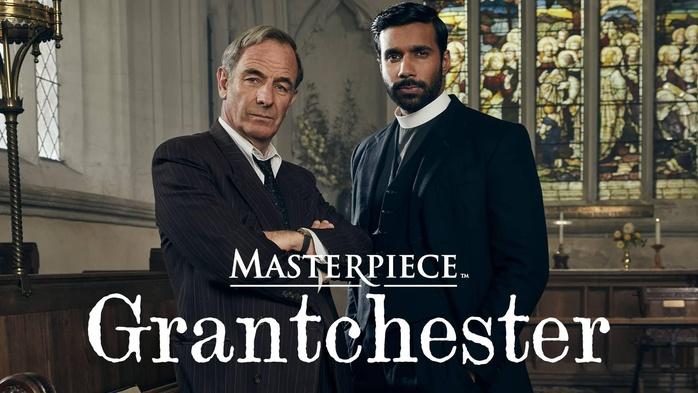

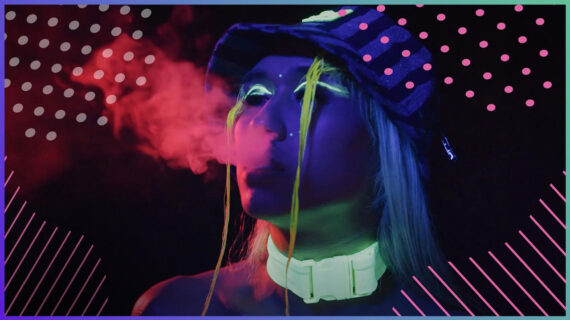

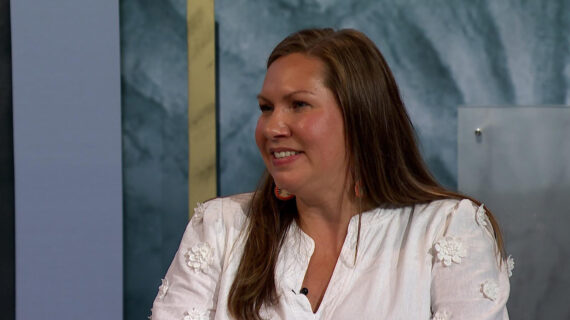
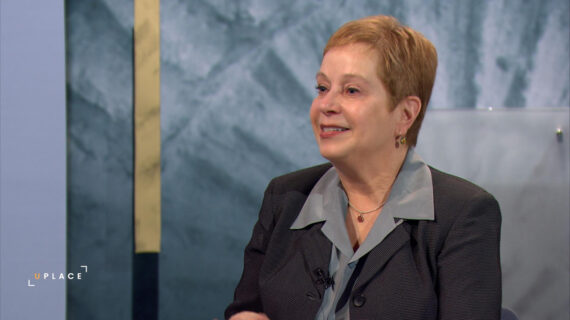

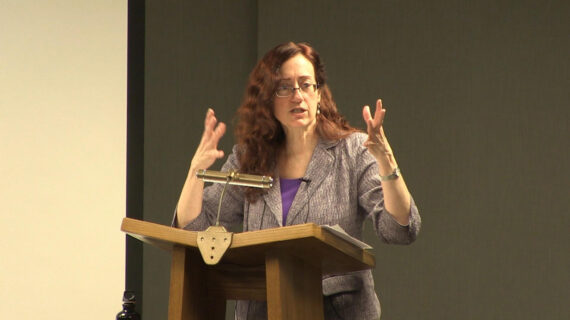
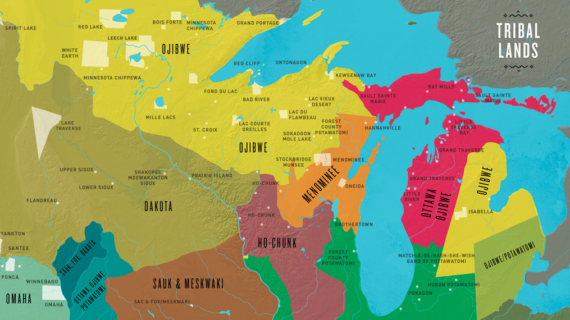


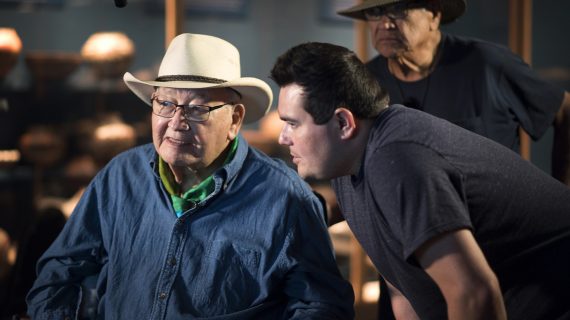
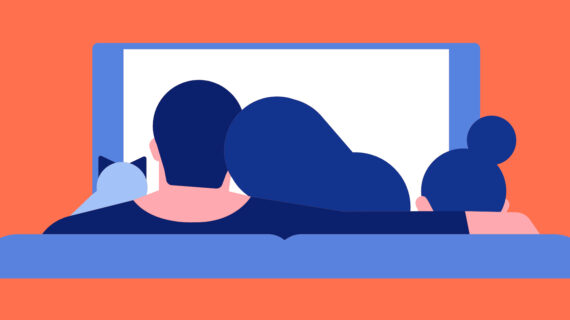
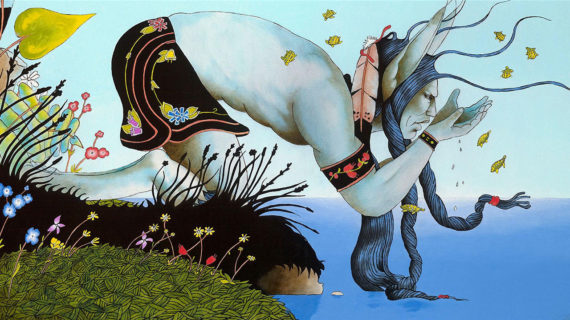

Follow Us